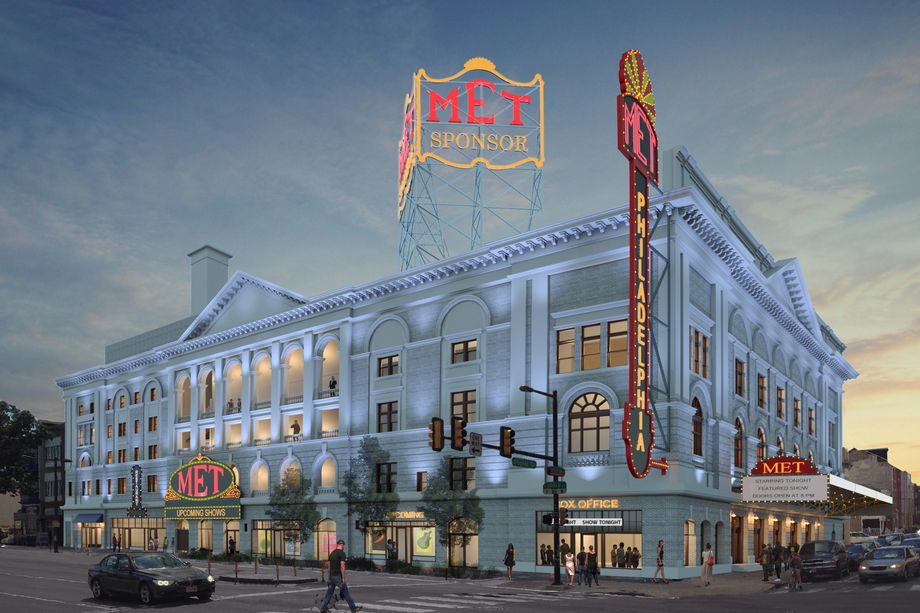Philadelphia Metropolitan Opera House to Feature Vintage-Style Lighting

The latest hurdle to the restoration of the Philadelphia Metropolitan Opera House has been cleared with the approval of some vintage-style LED lighting, says Curbed Philadelphia. On Tuesday the Philadelphia Historical Commission’s architectural committee voted unanimously to allow the installation of several large 1930s-era LED signs on the Opera House. During the same meeting it was announced that entertainment operator Live Nation has signed onto the project as well. There is supposed to be a restaurant tenant in the building as well, but it has yet to be announced.

This artist’s rendering shows what the Philadelphia Metropolitan Opera House could look like in the near future, complete with vintage-style lighting. (Photo: ATKIN OLSHIN SCHADE ARCHITECTS)
According to Curbed, “The design proposal by AOS Architects calls for four illuminated signs to be installed along the North Broad facade, including what the committee called the “football sign” in the center that reads “MET.” Another two, the most prominent of the bunch, will include a three-story sign on the side of the building at North Broad and Poplar, and a large billboard-like sign on top of the building. ”
The design for the renovation of the Metropolitan Opera House was based on a photo of the building from the 1930s, when it functioned as a movie theater. The building was initially erected in 1908 by Oscar Hammerstein I, the grandfather of Oscar Hammerstein II. It was designed by architect William H. McElfatrick. At the time, its seating capacity of 4,000 people made it the largest theater of its kind in the whole world. After its owner fell into debt, the Opera House wore many hats. It was a circus venue, a ballroom, and, most recently, a church for the Holy Ghost congregation.
Partial owner Eric Blumenfeld plans to turn the Opera House into a world-class musical destination. The signs are part of that plan, he argues, giving the building character and a sense of its age. Now that the committee has approved the design with the signage it will move on to the Historical Commission.



